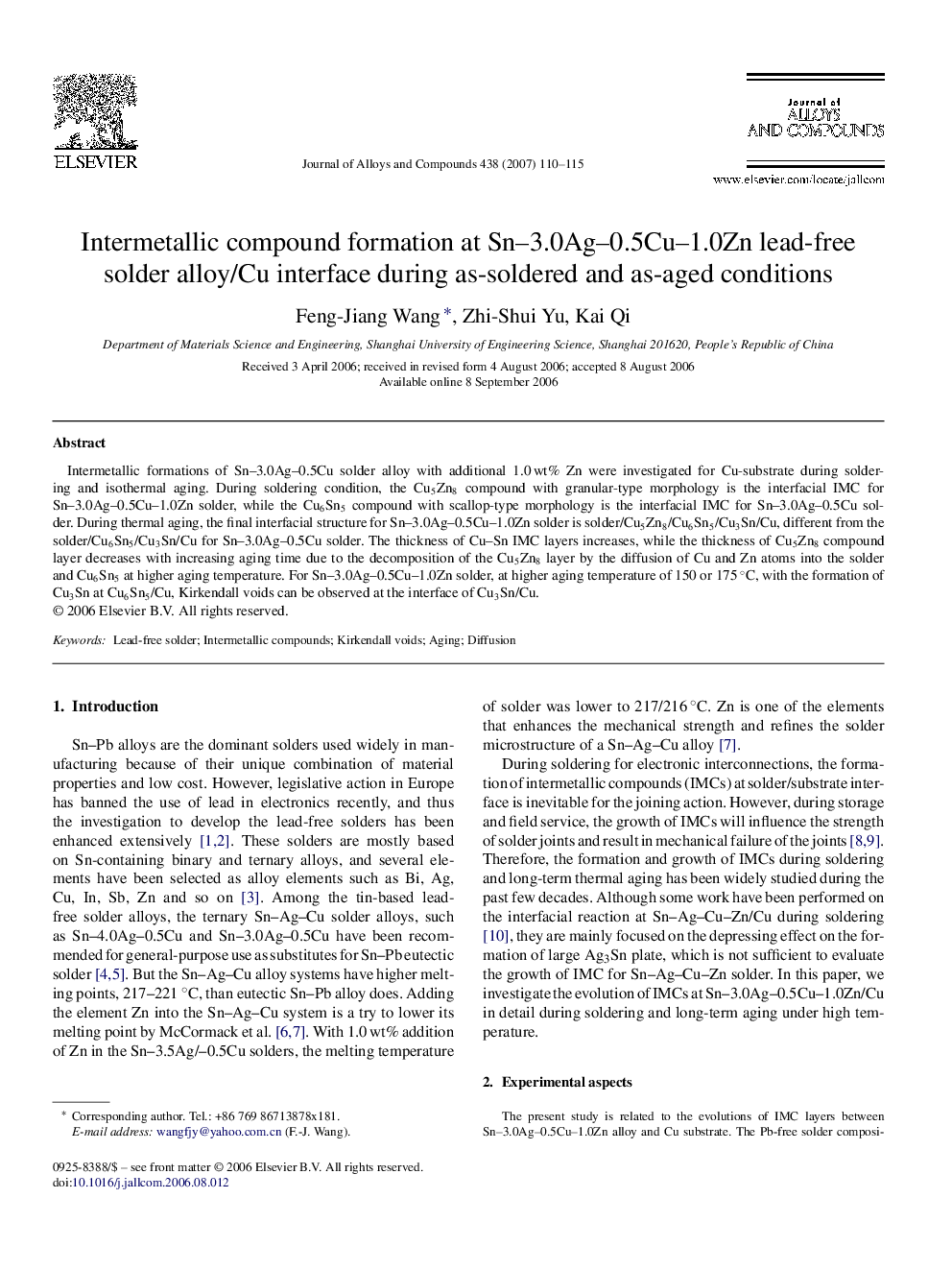| کد مقاله | کد نشریه | سال انتشار | مقاله انگلیسی | نسخه تمام متن |
|---|---|---|---|---|
| 1626322 | 1516436 | 2007 | 6 صفحه PDF | دانلود رایگان |

Intermetallic formations of Sn–3.0Ag–0.5Cu solder alloy with additional 1.0 wt% Zn were investigated for Cu-substrate during soldering and isothermal aging. During soldering condition, the Cu5Zn8 compound with granular-type morphology is the interfacial IMC for Sn–3.0Ag–0.5Cu–1.0Zn solder, while the Cu6Sn5 compound with scallop-type morphology is the interfacial IMC for Sn–3.0Ag–0.5Cu solder. During thermal aging, the final interfacial structure for Sn–3.0Ag–0.5Cu–1.0Zn solder is solder/Cu5Zn8/Cu6Sn5/Cu3Sn/Cu, different from the solder/Cu6Sn5/Cu3Sn/Cu for Sn–3.0Ag–0.5Cu solder. The thickness of Cu–Sn IMC layers increases, while the thickness of Cu5Zn8 compound layer decreases with increasing aging time due to the decomposition of the Cu5Zn8 layer by the diffusion of Cu and Zn atoms into the solder and Cu6Sn5 at higher aging temperature. For Sn–3.0Ag–0.5Cu–1.0Zn solder, at higher aging temperature of 150 or 175 °C, with the formation of Cu3Sn at Cu6Sn5/Cu, Kirkendall voids can be observed at the interface of Cu3Sn/Cu.
Journal: Journal of Alloys and Compounds - Volume 438, Issues 1–2, 12 July 2007, Pages 110–115